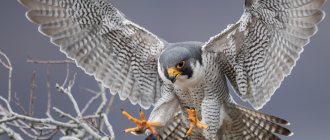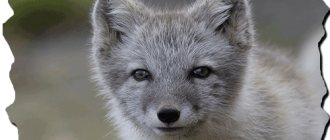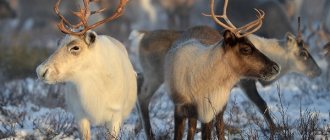The Earth is home to a huge number of living beings, each of which has its own unique qualities and abilities. In fact, studying animals is very interesting and educational. Comparing them with each other, we sometimes learn a lot of interesting and new things about them, discovering the secrets of their centuries-old existence.
flickr/Wild Dogger
Some representatives of the animal world are the best swimmers, others are the best fliers, others are the best jumpers, others are the best camouflage masters, and others are the fastest runners. For many, if not most, representatives of the fauna, speed of movement is a matter of life and death, only some of them run away, while others catch up. So let's talk about outstanding runners among animals with exceptional speed data, about those who are rightfully considered the fastest land animals on our planet.
Leo (80 km/h in the snatch)
a lion
A lion is a mammal of prey that belongs to the big cat family. Lions mainly live in Africa, inhabiting savannas south of the Sahara Desert. When hunting, a lion's speed is insignificant - about 55 km per hour, but their ability to run quickly is measured at around 80 km per hour.
Of all the existing cats on the planet, the lion is the largest. Even tigers are inferior to them in size. Weighing from 150 to 240 kg, they have a length of two to three meters and a height of over one meter. Some individuals grow so large that they reach a mass of over three hundred kilograms. So in 1936, in the city of Transvaal, the largest lion was killed, which weighed 313 kg.
Moose (about 70 km/h)
Elk
Belonging to the deer family, the elk is a fairly large mammal among the artiodactyls. The northern parts of Europe, Asia and America are proud of their dense forests, which are so popular with moose. Long legs and luxurious horns are what sets him apart from anyone else.
Moose not only run well, but also swim. With its impressive length of up to three meters and height of more than two, this species gains weight up to 700 kg. Naturally, females are much smaller and weigh about 400-500 kg. These heavyweight runners reach speeds of approximately 70 km per hour.
Garna (80-96 km/h)
Garna
Garna is the national animal of India. This is a species of antelope found in desert areas on the Hindustan Peninsula. Garna prefers hills and low grasses with unlimited access to bodies of water, so she is accustomed to not being thirsty and needs a sufficient amount of water.
The speed of this small antelope reaches 72 km per hour with a height of more than half a meter and a length of up to one and a half meters. Garns are a rather impulsive species, ready to stand up for their territory. It is not surprising that India was once famous for its Garn fights, which even ended in the hospitalization of animals in order to restore strength for new fights.
The fastest animal in the world
Cheetah
The fastest animal in the world is the cheetah. Up to 120 km in a couple of seconds, this is exactly the speed that the world's fastest land animal, the cheetah, develops. Usually a cheetah moves at a speed of 98 km/h, but if necessary, it will increase it by another two dozen. And this will be enough to overtake its victim in a few seconds.
Body structure: 1.5 m in length and weighing 45-60 kg does not allow maintaining such a high pace for a long time. On flat terrain, the distance covered by a cheetah at normal speed is only 400 m, and takes several minutes. If you have to increase the pace, the animal may not last long. Therefore, the main goal of the prey is to escape in the first minutes of the predator’s attack. Then the pursuit stops, since the cheetah does not have enough physical strength. So the cheetah is the king of sprinting among animals. You can find it in the Middle East or Africa.
Thus, the fastest land animals among predators are the cheetah, jaguar and lion. They love to hunt antelopes and gazelles, so among the fastest animals are Thomson's gazelle, wildebeest and pronghorn.
Second place - Jaguar
Jaguar
A large wild cat (also known as a jaguar) can reach a speed of 93 km/h. The weight of an adult male is 90-120 kg, females are 20% less - 60-80 kg. Body length is from 112 to 185 cm, not taking into account the tail, which adds another 45-75 cm. Height is more than 70 cm.
Their habitats are in North and South America. They love tropical rain forests to a greater extent, but are also found in the mountains and in areas where xerophytic shrubs grow.
Interesting: The most predatory dinosaurs - list, names, when they lived, description, photos and videos
They do not feed on carrion, so after a successfully completed attack they feast on fresh meat and go on their way without returning to this place. The habitat forces them to look for alternative sources of food, so the diet of jaguars is quite varied. They can even attack domestic animals.
Thomson's Gazelle (about 80 km/h)
Thomson's Gazelle
This species is also not particularly large in size. Thomson's Gazelle weighs from 15 to 35 kg and is a little more than half a meter tall. Their habitats are quite wide within Africa, since this artiodactyl is able to coexist peacefully with different species of its own kind: zebras, impalas and Grant's gazelles. These herbivores prefer the same savannas. Thomson's Gazelle is no slower and produces considerable speed when in danger - up to 80 km per hour.
Third place
Pronghorn Antelope
In order not to become prey to fleet-footed predators, the pronghorn antelope is forced to run away, so it is not surprising that the speed of this animal is appropriate. The average speed reaches 89 km/h. This is not the maximum maximum; 105 km/h and even 115 have been recorded.
A huge (in size) heart contributes to endurance, so the animal covers quite long distances at speed and easily escapes from its pursuers. They also love to run just like that and even compete with cars. Outwardly, it somewhat resembles a roe deer. Habitat: Canada and North America.
Springbok (88 km/h)
Springbok
The Springbok is the national animal of the Republic of South Africa and lives on open savannas. In fact, this is not just a small antelope that can run very fast, but an artiodactyl with an incredible ability to make three-meter jumps in the air in case of danger. Springbok reaches a speed of more than 85 km per hour, and the body is approximately one and a half meters long, their height ranges from 70 to 90 cm. The weight of this mammal is insignificant - on average 30 kg.
Blue wildebeest (80 km/h)
Blue wildebeest
This ungulate inhabitant of the savannas of East Africa prefers to live in a large herd. The blue wildebeest is a very large mammal. Its pronounced muscle mass, long legs and large horns make it a decidedly imposing presence. With an average height of 130 cm and a body length of about 200 cm, the weight is simply incredible - 300 kg. The blue wildebeest reaches speeds of 80 km per hour and is an incredibly agile and very cautious animal.
Brown hare (50-60 km/h)
Brown hare
Europe, Central Asia and the Middle East have attracted the taste of the smallest mammal - the brown hare. Weighing only 4-10 kg, the brown hare has a body length of more than half a meter. His speed while running reaches 70 km per hour. To escape from predators, these mammals are able to swim across bodies of water and even climb trees.
Amazing speed is inherent in the natural world only to animals, since instincts take precedence over the calculations and skills of even the fastest person in the world.
The fastest bird is the peregrine falcon (Falco peregrinus)
This bird of prey from the falcon family can be seen on almost all continents, with the exception of Antarctica.
In nature, there are about 17 subspecies of peregrine falcons.
On our planet it is not only the fastest bird, but also the fastest living creature.
© Fernando Cortes
According to experts, in a fast diving flight, a peregrine falcon can reach speeds of up to 322 km/h.
But it is worth noting that in horizontal flight the peregrine falcon yields first place to the swift, whose horizontal flight speed can reach 111 km/h.
Fifth place: lion and wildebeest
Lion and wildebeest
The favorite delicacy of the king of beasts is the wildebeest, which is capable of escaping from pursuit at speeds of up to 80 km/h (some sources say 90 km/h). Lions have a running speed of 80 km/h on average. Most often, female predators go on the attack, because males are quite lazy.
The wildebeest is quite agile for its weight (maximum 250 kg). It has an advantage over its enemy - endurance. It does not have cunning, so it is necessary to escape from predators by flight.
The lion is the heaviest among all fleet-footed animals. The average weight was calculated by scientists and is 181 and 126 kg for males and females, respectively. Sizes may vary depending on habitat. The largest number of animals now lives in Africa - the southern and eastern regions. Their numbers are declining, so they are considered a vulnerable animal species, despite the fact that they are able to run quite fast.
Interesting: The rarest animals in the world - list, names, descriptions, where they are found, photos and videos
Gazelle Granta (80-90 km/h)
Grant's Gazelle
Grant's gazelle is a larger type of gazelle, weighing up to 80 kg. Their home is East Africa, where they live comfortably in low thickets of bushes and thorns, while avoiding tall grasses. On average, the speed of an adult reaches 80 km per hour, and the body height does not exceed 90 cm. Males, as a rule, are much larger than females and are inferior to them in running speed.
Pronghorn (88 km/h)
Pronghorn
North America is famous for its amazing artiodactyl Pronghorns. They prefer to live in the desert, where the lack of tall vegetation forces them to escape from predators exclusively by running, while developing speeds of up to 95 km per hour. It is not surprising that even the most agile and fast predator is not able to catch up with the Pronghorn, as it makes incredibly maneuverable jumps up to six meters long.
The body of the Pronghorn has a length of 130-150 cm, and a height of 80 to 104 cm. Considering that females are smaller than males, the weight of this species ranges from 35 to 70 kg. At a normal running pace, these nimble jumpers also develop considerable speed - about 48 km per hour.











